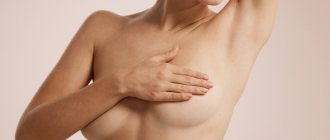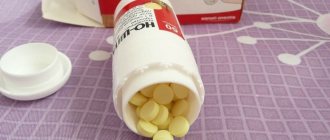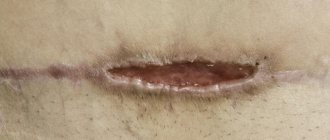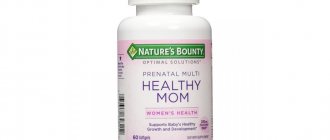Home » Articles » Lactostasis: what to do if your breasts are inflamed
Young mothers often face problems. Most often they are related to their health. Even the natural process of breastfeeding can bring problems, one of them is lactostasis. The doctor makes this diagnosis to every third woman who chooses natural feeding. Let's figure out how to cope with this disease.
Causes of lactostasis
Milk stagnation is a common problem that occurs in women after childbirth, especially in those who breastfeed for a long time. Lactostasis manifests itself in the form of swelling in the mammary glands and difficulty releasing milk.
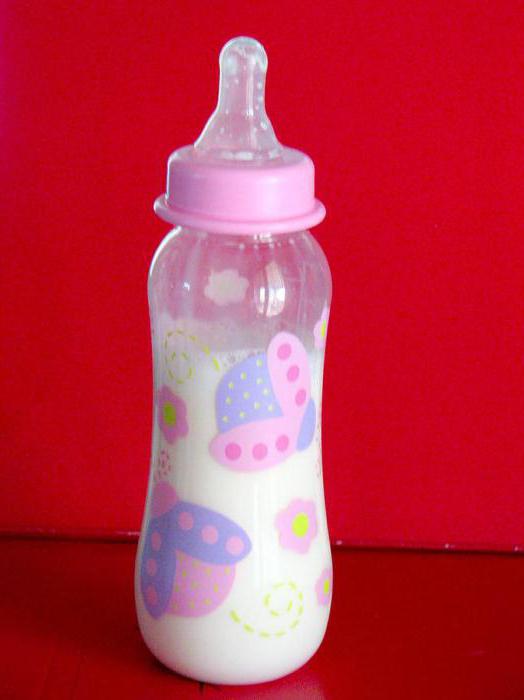
Most often, pathology occurs if:
- The ducts in the breast become clogged (due to cracks on the surface of the nipples).
- A woman wears underwear that is inappropriate for nursing mothers.
- Damage to the mammary gland has occurred.
- The woman takes too long breaks between feedings.
- She uses the same position or expresses milk only one way (not all areas of the mammary glands are emptied).
- A woman sleeps on her side for a long time.
- The baby has been introduced to complementary feeding and is consuming much less breast milk.
- A woman is overworked and lacks sleep, which negatively affects the condition of the mammary glands.
If a young mother is faced with lactostasis, she, of course, would like, if possible, to eliminate the problem herself. After all, a nursing woman has little time for herself, and sometimes she does not have time to go to the clinic and undergo examination and treatment. The article will discuss how to strain milk stagnation at home, and what methods and means are available for this.
Milk stagnation: reasons
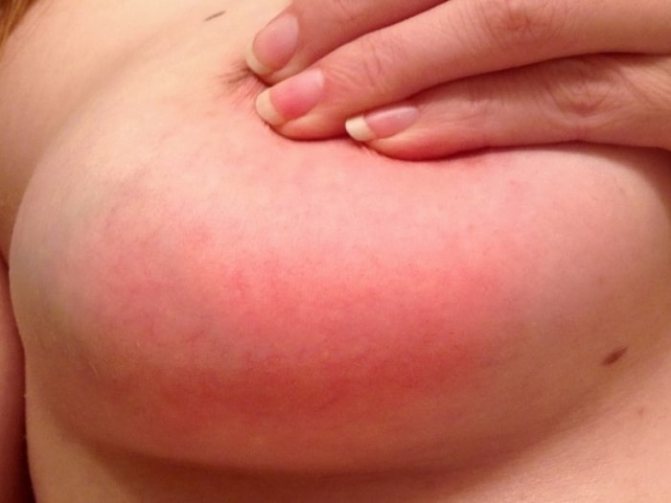
What are the reasons for milk stagnation? To prevent the first signs of milk stagnation from appearing, you need to know about its causes, these are:
- Strange as it may sound, even with full compliance with the rules of feeding and hygiene, stagnation of milk can occur, and this is due to the structural features of the mammary glands;
- Inexperience of a young mother and improper feeding of the baby;
- Significant volumes of milk;
- Baby's age;
- Hypothermia or overheating of the mother’s body;
- Lack of fluid in the mother’s body, when a woman hardly drinks fluid;
- Incorrect milk sucking in newborns;
- When more milk is produced than the baby consumes, that is, a surplus remains. This is usually typical for the first postpartum week.
The mammary glands are similar in internal structure to a bunch of grapes: the breast consists of 7-10 “lobules”, each of which contains alveoli that produce milk. The milk duct passes from the “lobule” to the nipple, through which milk flows.
If the child does not retract the nipple correctly, then not all milk ducts “work”; in some, the milk remains, hence the stagnation of milk. It is also necessary to remember that in the first week the baby needs much less milk, so some of it is not consumed and stagnation occurs.
In addition, at first, the so-called colostrum is released, this is the same milk, but with more fat content and a thicker consistency.
If the mother does not drink liquid or drinks it in small quantities, the milk also becomes thicker and has difficulty passing through the milk ducts, which also leads to stagnation of milk.
Overheating or, on the contrary, hypothermia is extremely dangerous for mommy. Overheating can occur in hot weather, in a sauna, and even in a bathtub if you stay in it for a long time. Hypothermia can occur not only in cold weather, but also after swimming or after being in a draft. When overheated or hypothermic, the milk ducts become inflamed, the passage of milk through them becomes difficult, and the amount of milk itself increases.
Signs of lactostasis
How does this pathology manifest itself? Lactostasis can be detected if a nursing mother has the following symptoms:
- Pain in the mammary glands.
- Induration and redness of some areas of the breast.
- Headaches and muscle pain.
- Stopping milk secretion.
- Fever.
- When you press on the chest, you may notice swelling in the form of lobules.
All of the above signs indicate blockage of the mammary gland ducts and the formation of a milk clot, which is not released, but remains inside the tissue, causing pain.
Under no circumstances should the disease be neglected, because this can lead to mastitis. This inflammatory process cannot be eliminated at home. You can get rid of mastitis only with the help of physical therapy. Sometimes it is so advanced that surgery is required to eliminate it.
Milk stagnation: symptoms

So, the symptoms of milk stagnation are:
- Painful sensations in the chest that intensify over time;
- Feeling of breast swelling, which also intensifies;
- Feeling of heaviness in the mammary glands;
- Increase in temperature and feeling of heat;
- With palpation, you can feel the seals, which are unpleasant to touch.
Preventive measures
The article will talk about how to strain milk stagnation at home. But preventing diseases is much better and easier than treating them.
To avoid such a problem, you must first establish a clear feeding schedule for the child and normalize the woman’s diet. Spicy, fatty, sweet foods, pickles and baked goods should be excluded from the diet, as all these foods contribute to blockage of the breast ducts and stagnation of milk. It is necessary to properly care for your nipples and breast skin, and wear a comfortable bra.
Many women are very scared when they discover symptoms of lactostasis. “I can’t pump out stagnant milk, what should I do?” - they ask. Often older relatives (mothers, grandmothers) give the wrong advice. They recommend that breastfeeding women constantly express milk.

Previously, it was believed that if this was not done, mastitis would occur. But this is a mistaken opinion. Women who try to solve the problem of lactostasis themselves or with the help of dubious advice only make the situation worse.
What problems may arise, possible solutions
The first and main problem is mastitis, especially. With prolonged stagnation, lactostasis almost always turns into mastitis. If your temperature rises to 37 or higher, then mastitis should be suspected. If it is present, any heating is strictly contraindicated.
Even if you know how to pump properly, it still won't help. By heating and massaging the mammary glands, you thereby intensify the inflammatory process. If there is already an abscess inside, then due to pressure it can burst. The only help for such a complication is surgery.
The second problem with lactostasis occurs if you feed the baby before or immediately after pumping. Since the activity of the mother’s hormonal system is associated with the baby’s attachment to the breast, feeding before pumping will give the wrong signal to the body to produce more milk, because it is guided by the needs of the baby. After pumping, the body will also assume that it needs more milk. And increasing its production will aggravate lactostasis.
The solution lies in how to express properly. This should be done instead of one, two or three feedings. This way, the hormonal system will perceive pumping as a normal meal for the baby, and will not change the amount of breast milk.
Compliance with hygiene rules
If a nursing mother is faced with a pathology such as milk stagnation, she needs, first of all, to calm down and determine what measures need to be taken. One of the most important aspects is maintaining good breast hygiene. First of all, before and after feeding, be sure to wash your hands with soap. It is necessary to wash the mammary glands at least 2 times a day. It is better to use fragrance-free liquid soap for this. You need to dry your breasts with a napkin, not a towel, as rough fabric can increase pain. If cracks are observed in the nipple area, they must be treated with medicated oil or ointment.
In addition, the bra worn by a nursing woman should be as comfortable as possible, made from natural materials. Such underwear will not compress the tissue, causing lactostasis.
So, the first condition for successfully combating pathology is cleanliness. We will talk about how to strain stagnant milk with your hands a little later.
What measures need to be taken?
Lactostasis occurs for various reasons. But there are ways in which you can strain milk stagnation at home. And it does not matter for what reason this pathology appeared. Firstly, the baby needs to be fed as often as possible.

It will be better if the area of edema that occurs due to stagnation of milk is located under the baby’s jaw. You need to make sure that the child wraps his mouth around both the nipple and the areola. During the feeding procedure, a woman should massage the mammary glands with her knuckles. This will improve milk flow. During breastfeeding, you need to include more fatty fish and vegetable oil in your diet. If it is not possible to strain milk stagnation, certain compresses help. This procedure will be discussed a little later. But the main way to get rid of lactostasis is pumping. This process requires care and compliance with some important rules.
Preparing to pump
If you feed the baby not according to a set schedule, but according to his desire, then additional emptying of the mammary glands is not required. But if a nursing woman already has lactostasis, it is necessary to remove the milk from the breast where it has accumulated as soon as possible.
How to properly strain milk stagnation? First of all, you need to prepare your breasts. Before expressing, it is important to warm up the tissues with a hot shower, as the heat helps to remove blockages in the glandular ducts. Then you need to get a massage. It must be remembered that with lactostasis, you can empty the mammary glands only with your hands, and in no case with a breast pump. Before pumping, many doctors advise using cabbage leaf lotions with a thin layer of honey. These compresses eliminate pain and relieve swelling, but they should be applied for no more than fifteen minutes.
Treatment options
There are several methods for treating lactostasis. It is best to use only those recommended by doctors or invite a specialist to your home to help you and establish breastfeeding. Most young mothers take the wrong actions during lactostasis, aggravating their condition.

Massage
One of the main methods that can influence lactostasis is massage. It is worth kneading the mammary gland or performing lymphatic drainage. In the latter case, you should entrust the actions to a doctor, since you will not achieve a positive effect on your own. Correctly influencing the breasts should be done according to the following rules:
- knead from the outer area to the nipple;
- make only smooth and careful movements;
- stroke and rub your breasts.
If you have pain in the chest, you need to massage it very carefully. Some women do it in the shower while expressing milk. If you choose this option, you must not overdo it - pumping should be done until relief, and not until the breast is completely emptied.
Departure is paid separately - 300 rubles
Request a call
Call any time of the day:
+7 (499) 455-08-05
To reduce tissue swelling, it is necessary to apply a cool compress to the chest after manipulation. Some people choose cabbage leaves or a wet towel for it. Thanks to this, the mother’s condition can be slightly alleviated, and the milk will flow easily during feeding.
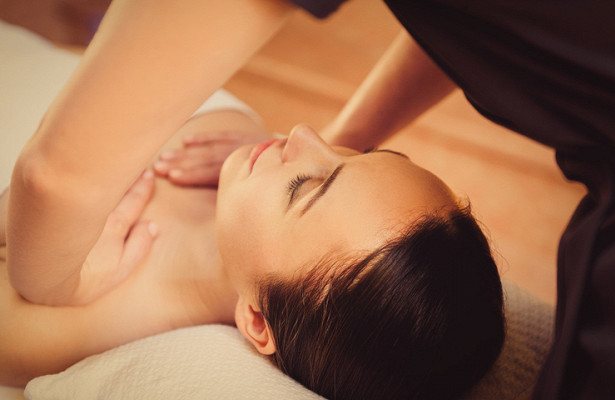
Hot shower
Another way to get rid of swelling, congestion and pain is to treat it with a shower. The water should be lukewarm and under no circumstances hot, since the mammary glands cannot be overheated. An increase in temperature will only worsen the woman’s condition, as the milk will become more viscous and the swelling will intensify.
A warm shower along with massage movements with a washcloth or hands can cope with slight lactostasis. If the problem is serious, it is necessary to express the excess milk. You can do this right under the shower - the streams of water relax the ducts and gently massage the breasts.

Professional help
The best solution for young mothers is to call a professional at home. You should contact him at the first symptoms, then you will quickly get rid of stagnation and prevent the development of mastitis. You can’t do without the help of a specialist when:
- prolonged stagnation, with symptoms persisting for 48 hours or more;
- an increase in body temperature above 37.7 degrees;
- severe pain;
- intense redness of the skin in the area of congestion.
All these signs may indicate that a woman has developed mastitis. It will not be possible to cope with it using folk and improvised means.

A doctor who deals with lactation problems is able to choose the right method to eliminate stagnation. He can offer:
- medicinal method of treatment;
- teach how to express milk correctly;
- perform a massage correctly;
- choose a suitable compress.
He will also give the young mother a lecture on proper breastfeeding and suggest the appropriate position and regimen. Most breastfeeding doctors are good psychologists. They will calm the woman down and help her achieve a state of psychological comfort. It is worth remembering that stress leads to spasm of the ducts, which causes disruptions in lactation.

Stagnation of breast milk: how to strain it using compresses
When used correctly, this method is useful, as the lotions warm up and relax the tissues. As a result, the ducts of the mammary glands are better emptied during pumping. A compress can be made from a napkin or diaper soaked in warm water, or a heating pad. If a woman has even a slight increase in temperature, lotions should not be done. It is better to wait until the fever subsides and only then start preparing to pump.
As a folk remedy to alleviate the symptoms of lactostasis, you can also use a cake made from flour and honey or a lotion made from low-fat cottage cheese. This will soften the skin, especially chapped skin, and it will be easier for the woman to express milk.
Feeding for lactostasis

Most women when breastfeeding are faced with the problem of milk stagnation.
Milk production immediately after childbirth and blockage of the ducts are due to an unsettled feeding regime.
The baby is not yet able to drink such an amount of milk; the residue in the breast thickens and clogs the milk outlet.
If decanting measures are not taken in time, an inflammatory process may develop in the gland, requiring antibacterial therapy.
A slight increase in temperature does not affect the properties of milk. You need to feed alternately with both breasts . The more the baby suckles, the faster you can get rid of lactostasis.
Mechanical breast pumps cannot completely empty the breasts of milk; to prevent stagnation, it is better to express milk manually.
Breast massage
Before straining stagnant milk with your hands, you need to thoroughly knead your breasts.
First of all, you should take the most comfortable position, preferably horizontal, and relax your whole body. 4 fingers of one hand should be placed under the mammary gland, with the thumb and index finger connected on the area of skin next to the areola. The other palm should lie on the surface of the chest. It is necessary to apply light pressure on the mammary gland; movements are best made in the direction from the lateral to the central part. There is no need to press too hard. After some time, it is recommended to change the nature of the movements to stroking and tapping. Massage your breasts for no more than twenty minutes. If a woman previously did not know how to properly strain milk stagnation with her hands, and lactostasis has become advanced, she will feel an improvement no earlier than three days later.
Causes
To effectively combat lactostasis, you need to know the main reasons for its occurrence:
- Cracks in the nipples that have caused blockage of the milk ducts.
- Long break in feeding.
- A monotonous method of emptying the breast (usually when pumping), leading to emptying of not all parts of the breast.
- Milk stagnation caused by an uncomfortable sleeping position or lying on your side for a long time.
- Tight underwear.
- Chest injury.
- Introduction of complementary foods leading to a decrease in milk sucked by the baby.
Finding the right breastfeeding position
A common cause of lactostasis is incorrect or monotonous posture during breastfeeding.
The question of how to strain milk stagnation at home can be solved by selecting a suitable feeding position. Then the child will promote the outflow of milk and eliminate swelling and blockage of the gland duct.
First of all, it is necessary to understand in which areas of the tissue the swelling has occurred. If it has formed in the armpit area, you need to feed the baby in the under-arm position.

If the middle of the chest is swollen, the breastfeeding procedure should be performed while lying on your side. The swelling from below will quickly subside if you feed the baby while sitting him on your lap. If swelling occurs in the upper area of the mammary gland, you need to breastfeed the baby by placing him on the bed and bending over him.

If milk stagnation is not accompanied by an increase in temperature, before the breastfeeding procedure you can apply a warm lotion or take a hot shower, massage and express. A cold compress can also help relieve pain and severe swelling.
Symptoms of the disease
Signs of lactostasis can be divided into two groups: at an early stage and after inflammation has begun (in advanced form). Immediately after the blockage of the duct appears, the woman feels:
- chest pain;
- compaction in the area of one or more lobes;
- slight tissue swelling.
Departure is paid separately - 300 rubles
Request a call
Call any time of the day:
+7 (499) 455-08-05
Sometimes it happens like this: there is pain and swelling of the tissue, but there is no compaction. This happens with a slight lactostasis, which went away on its own. For example, milk stagnation occurred at night, and in the morning you fed the baby, and it resolved.

How to understand that inflammation has begun
More advanced lactostasis, which can only be treated with the help of a specialist, is often accompanied by a pronounced inflammatory process. Its symptoms:
- skin redness;
- increased body temperature;
- severe pain;
- bad feeling;
- heaviness in the chest;
- feeling of fullness of the gland.
If you have lactostasis, then the temperature will remain at 37-37.5 degrees. If it becomes higher, then this is a sign of the development of infectious mastitis. After the lobes and ducts are emptied, the temperature will drop within a few hours.
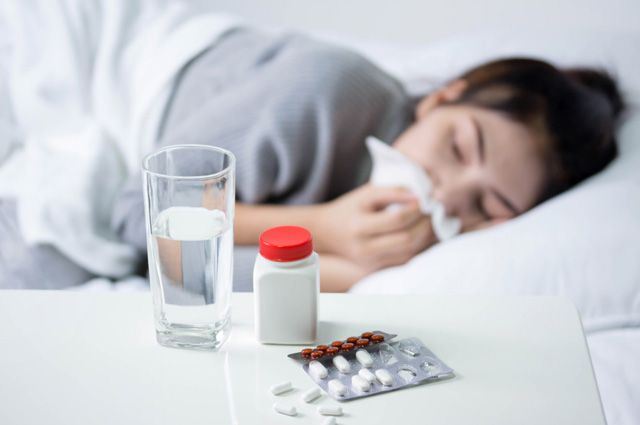
Physiotherapy
If a woman follows all the necessary rules and still cannot express stagnant milk, what should she do in this situation? It is necessary to seek medical help. Physiotherapy prescribed by the doctor helps eliminate signs of lactostasis. Most often, therapy for this pathology is carried out using ultrasound and exposure to electromagnetic fields. In some cases, to relieve pain and fever due to milk stagnation, a specialist recommends medications (Drotaverine, Panadol), as well as ointment, cream or infusion, which can be purchased at any pharmacy. Of course, in each specific situation, the doctor can choose the right treatment and tell those women who do not know about this procedure how to strain milk stagnation at home.
Types of breast massage for lactostasis and basic rules
Depending on whether a nursing woman has already developed lactostasis, two types of breast massage are suggested - therapeutic and preventive. As is clear from the names, the first type is intended to prevent stagnation of milk in the glands, the second is aimed at eliminating it if the ducts are already clogged. Experts recommend starting preventive sessions from the first days of feeding in order to maintain a full flow of milk.
Therapeutic massage for lactostasis in nursing mothers is carried out in compliance with certain rules:
- kneading the chest should be started from the first days after the symptoms of the problem are detected, otherwise untreated lactostasis will provoke the development of mastitis;
- before starting the treatment procedure, the breasts need to be prepared - doctors advise applying a warm heating pad, a towel or taking a shower to the glands;
- monitor the sensations during the session - the woman should not feel acute pain;
- repeat the procedures until the lumps in the breast completely resolve and the feeding process ceases to cause discomfort.
If the gland duct is blocked, the process of inflammation begins inside. During the first two days, every effort must be made to eliminate the stagnation, otherwise bacteria will begin to multiply in the area of the blockage. This development of events is fraught with the formation of mastitis, often of a purulent nature.
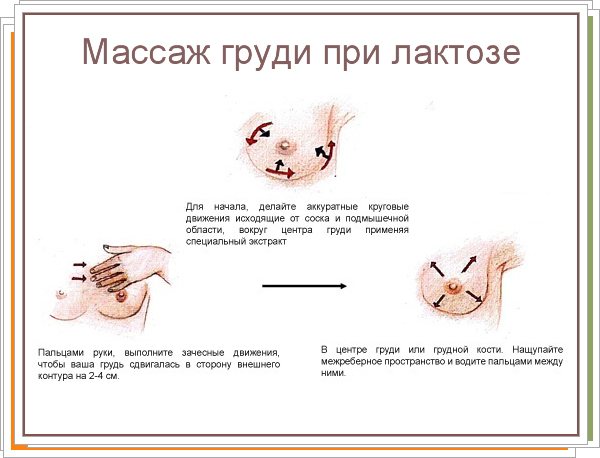
Preventive massage
First, you need to talk about how to properly knead your breasts to avoid the appearance of stagnation and lactostasis. Preventive measures will help not provoke swelling of the gland, maintain full lactation and good flow of milk through the ducts to the nipple. This massage should be done before putting the baby to the breast - this will make it softer, lumps will break up if they have already appeared, and it will be easier for the baby to latch on to the nipple.
Preventive sessions can be carried out independently at home, preferably while taking a shower:
- make movements in a circle from the edges of the chest to the middle, massaging the skin with light pressure with your fingers;
- after 2-3 repetitions, wash the glands with warm water and again repeat the massage movements in a circle.
The water temperature should be comfortable - not cool, but not scalding. The duration of the preventive massage session is 8-10 minutes, after which you need to lightly express the milk and feed the baby.
Therapeutic breast massage for lactostasis
How to do a massage to eliminate signs of lactostasis, if the lumps are clearly palpable, the woman experiences nagging pain in the chest, and the gland itself is hot and dense? Such symptoms require more serious measures than preventive sessions while taking a shower. You cannot perform a therapeutic massage with dry hands, much less allow your husband to act as a breast pump after the session. This can damage the delicate tissue of the nipples and cause infection to enter the gland.
Recommendation! If a woman does not know how to properly massage her breasts to get rid of lactostasis, or is afraid to do it herself, you can ask a specialist for help. A doctor or visiting nurse will come to your home, work on all lobes of the mammary gland, show you the correct technique and help you express the remaining milk.

Preparation
Before talking about the massage technique for lactostasis, you need to dwell on the rules of preparation for the session, this is no less important than the procedure itself. First of all, you need to thoroughly wash your hands and mammary glands. Ideally, you should take a warm shower to relax the muscles and improve the flow of milk through the ducts. The massage should begin immediately after applying the baby to the breast, or expressing (manually or using a breast pump).
The skin around the gland is lubricated with any oil that is in the house - olive or castor, simple vegetable oil is also suitable. The main thing is that the product does not get on the areola and nipple area. For the convenience of massage, it is better for a woman to sit in front of a mirror. If the stagnation is extensive, then the session is carried out not only after feeding, but also before it, and the breast is then rinsed with boiled water.
Technique
How to properly massage the breasts during lactostasis to achieve maximum effect? It must be remembered that strong pressure aggravates pain and swelling, so movements should be smooth and careful. If a woman feels pain during a massage, perhaps she does not follow the technique - in this case, it is worth consulting with a specialist. The rules of massage are simple:
- The gland is supported by the hand, while the second one works over the entire surface of the chest with stroking movements. They start from the base, including the bottom and armpit, and towards the nipple;
- after stroking, spiral movements are made along the gland, also from the base towards the center (3-4 times for each breast);
- circular movements clockwise;
- each breast is taken in hand, squeezed a little and worked in a circle;
- in the area of compaction, the skin is kneaded most carefully, without pressure or sudden movements, but these areas should be given much more time.
How to break up lactostasis so that not only the upper lobes are worked out, but also those located below, at the base of the chest, and in the armpits? Pay attention to each part of the gland, not missing a single area when massaging, while loosening the pressure in the areas of compaction and location of lumps. If the procedure is carried out correctly, after performing the first two sets of movements, milk will begin to be released from the nipple.
Advice! How to properly massage to overcome lactostasis is now clear. You need to end the session by bending over and gently shaking your shoulders. In this position, milk will flow from the glands towards the nipple along the ducts that have expanded during the procedure.
After the massage, the breasts are thoroughly washed and blotted with a towel - now you can start feeding. If during the session it was not possible to completely break the seal, the remaining milk will have to be expressed. This should not be done immediately after application; the body will perceive this as a signal about an insufficient amount of dairy products and will increase lactation, which will aggravate lactostasis. The ideal break between latching and pumping is half an hour.

What is absolutely forbidden to do?
So, the list of actions that are strictly prohibited during lactostasis includes:
- Stopping breastfeeding. This is extremely undesirable, since it is the baby who empties the mammary glands most effectively.
- Warming up the breast tissue (if the woman does not plan to express lactostasis).
- Treatment of the mammary glands with Vishnevsky ointment, camphor or ethyl alcohol.
- Tightening the chest with bandages.
- Ignoring pronounced symptoms and refusing to contact a gynecologist if there is a very high temperature or severe pain.
- Using medications independently, without the supervision of a specialist. This can make the situation significantly worse.

It must be remembered that if the symptoms of milk stagnation do not go away within two to three days, you should contact the clinic to avoid complications such as purulent mastitis, which can only be treated with surgery or antibiotics.

Fortunately, in our time there are drugs that fight inflammation and are not a contraindication for breastfeeding. So if a woman is diagnosed with mastitis and prescribed antibiotics, she does not need to interrupt breastfeeding.
What are the benefits of breast massage?
It is categorically unacceptable to let the appearance of stagnation take its course - it will not resolve on its own, although such a misconception exists. There are two options:
- residual compactions are formed, invisible to the woman, which can subsequently cause mastopathy, the appearance of cysts, benign and malignant tumors;
- infectious inflammation of the mammary gland - mastitis, a dangerous disease in which breastfeeding has to be suspended due to complex treatment with antibiotics and even the need for surgical intervention.
Therefore, at the first manifestations of lactostasis, you should immediately begin to fight this serious problem. One of the most effective methods is breast massage.
Preventive kneading and massaging should begin on the 4th day after the birth of the child, at which time colostrum ceases to be released and milk production begins. It can be performed by a specialist massage therapist, one of the relatives, or the woman herself - while learning the basics of manipulation. A pediatrician or massage therapist at a clinic can teach this.
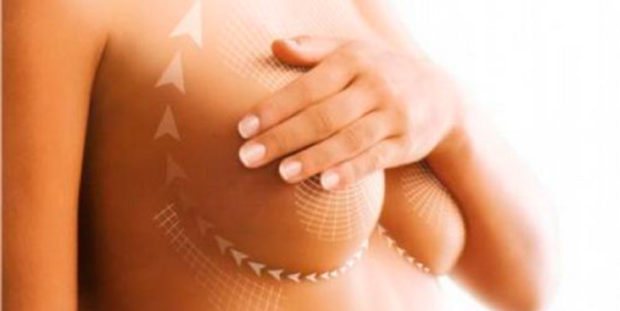
The benefits of this procedure are as follows:
- breaks up pockets of stagnation and hardening in the chest;
- disperses swelling;
- softens tissues;
- removes milk that has stagnated in the ducts;
- promotes stretching of passages and free circulation of fluid;
- prevents the onset of inflammatory processes;
- stabilizes the process and feeding schedule;
- helps to get rid of panic and fear, to have a positive attitude towards breastfeeding for a longer period of time.
